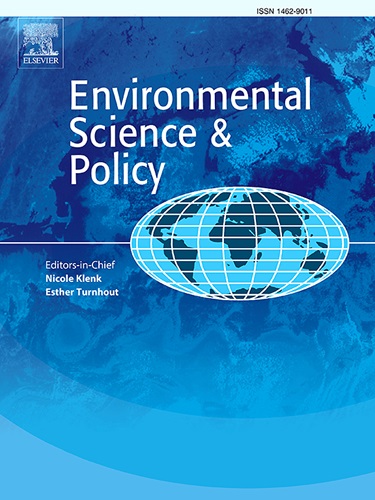水-能量-食物关系研究的类型学
IF 5.2
2区 环境科学与生态学
Q1 ENVIRONMENTAL SCIENCES
引用次数: 0
摘要
水-能源-粮食(WEF)关系的提出是为了解决本世纪头十年后期水、能源和粮食安全方面的综合挑战。作为一种综合方法,世界经济论坛联系将这三种资源结合在一起,以衡量和管理它们之间的权衡、共同利益和关系,并整合相关治理部门之间的合作和政策。然而,学者们注意到,文献中的一个关键挑战是缺乏对世界经济论坛关系的明确和一致的定义。随着世界经济论坛联系出版物的数量和多样性,单一的定义可能不再足够。因此,这篇透视文章通过发展世界经济论坛联系的类型学来对世界经济论坛联系研究的框架和定义进行分类,从而解决了这一限制。这种类型为设计未来的世界经济论坛联系研究项目和对现有研究进行分类提供了清晰的思路。它在两个类别中发展类型学:研究设计中的整合水平(如多学科,跨学科或跨学科整合)和三个部门的权重(水,能源和食品是否都被平等考虑,或者是否一个部门比其他两个部门更强调)。通过使用这两个维度,本文开发了一个包含世界经济论坛关系六类的类型学。学者们可以使用这一类型学在其研究的特定背景下准确、一致地描述和设计世界经济论坛关系研究。本文章由计算机程序翻译,如有差异,请以英文原文为准。
A typology of water-energy-food nexus research
The water-energy-food (WEF) nexus was introduced as an approach to address the combined water, energy, and food security challenges of the late 2000s. As an integrated approach, the WEF nexus combines these three resources together to measure and manage the trade-offs, co-benefits, and relationships between them and to integrate collaboration and policy between their related governance sectors. However, scholars have noted that a key challenge in the literature is a lack of a clear and consistent definition of the WEF nexus. With the volume and diversity of WEF nexus publications, a single definition may no longer be sufficient. Therefore, this perspective article addresses this limitation by developing a typology of the WEF nexus to categorize the framings and definitions of WEF nexus research. This typology provides clarity both in designing future WEF nexus research projects and in categorizing existing research. It develops the typology across two categories: the level of integration within the research design (as multidisciplinary, interdisciplinary, or transdisciplinary integration) and the weighting of the three sectors (whether water, energy, and food are all considered equally or whether one sector is emphasized over the other two). By using these two dimensions, this article develops a typology with six categories of the WEF nexus. Scholars may use this typology to accurately and consistently describe and design WEF nexus research within the specific context of their research study.
求助全文
通过发布文献求助,成功后即可免费获取论文全文。
去求助
来源期刊

Environmental Science & Policy
环境科学-环境科学
CiteScore
10.90
自引率
8.30%
发文量
332
审稿时长
68 days
期刊介绍:
Environmental Science & Policy promotes communication among government, business and industry, academia, and non-governmental organisations who are instrumental in the solution of environmental problems. It also seeks to advance interdisciplinary research of policy relevance on environmental issues such as climate change, biodiversity, environmental pollution and wastes, renewable and non-renewable natural resources, sustainability, and the interactions among these issues. The journal emphasises the linkages between these environmental issues and social and economic issues such as production, transport, consumption, growth, demographic changes, well-being, and health. However, the subject coverage will not be restricted to these issues and the introduction of new dimensions will be encouraged.
 求助内容:
求助内容: 应助结果提醒方式:
应助结果提醒方式:


